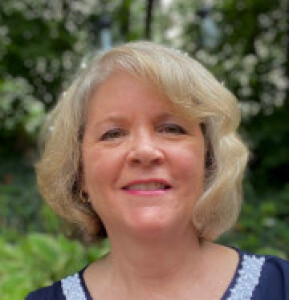Jean-Marie Galing's collections
Human Figure
<p>This collection supports learning in the Grade 4 gesture drawing and wire sculpture lessons. Activities:</p>
<ul><li>Realism vs. Abstraction: students sort sculptures of the human figure into two categories (realistic or abstract). Describe the ways that some artists abstract the human figure.</li><li>Compare contrast 2D/3D: identify the shapes an artist used to portray the human figure in a gesture drawing, then identify the equivalent forms used in a sculpture. Record findings in a T-chart.</li></ul><p><br /></p>
 Jean-Marie Galing
Jean-Marie Galing
20
Festivals
<p>Everyone enjoys a festival or celebration! Let's look at some. . . </p><ul><li>Observe images and guess which culture each represents.</li><li>Play "I Spy Juxtaposition." Work with a small group to examine an image and find where the artist has juxtaposed symbols or text with the image to create meaning. </li><li>What might you include in an artwork about a festival or celebration? Would there be dances, special music, food, clothing, or activities?</li></ul><p>Art making challenge: Collaborate in a small group to create a design for a booth, stage, or other area for a cultural tradition at a festival. Designs will be combined into a festival mural.</p>
 Jean-Marie Galing
Jean-Marie Galing
18
Art & Culture Sort
<p>First, sort the images by type of art/artist. Teacher should make index card headings for the following categories: Painting/Painter, Textile/Weaver, Clothing/Fashion Designer, Architecture/Architect, Prints/Printmaker, Sculpture/Sculptor, Functional Ceramics/Potter or Ceramist. Sometimes an image may cross categories (painting of a house might be categorized in architecture or painting); either answer would be acceptable if the student can justify why.</p><p>Second, make an educated guess about culture represented in selected images. Students can "guess and check" with teacher. Online research option: students work in pairs to access this collection and click on the info button for an image to learn about the maker, time period, and culture. They can record their findings to help answer the reflection questions below.</p><p>After the sorting activities, ask students to choose an image and answer: <em> Why is/was this object of value (or useful)? How do you think it expresses something important to the people of that culture? </em></p>
 Jean-Marie Galing
Jean-Marie Galing
26
Molas Depicting People
<p>Molas are made by indigenous peoples in Panama. They are colorful fabrics with appliqued designs. These molas depict people. </p><ul><li>What colors do you see?</li><li>What shapes can you find?</li><li>What kinds of patterns do you see?</li></ul><ul><li>What do you think the people are doing?</li></ul>
 Jean-Marie Galing
Jean-Marie Galing
5
Transformed Environments
<p>Some of these environments have been transformed by natural occurances. Some have been transformed by human activity. </p>
<p>Which transformations are positive ones? Which have negative outcomes? How can humans make choices to limit negative outcomes on the environment?</p>
 Jean-Marie Galing
Jean-Marie Galing
30
Medallions
<p>Work with a partner or partners to analyze each object:</p>
<ul><li>What do you think the symbols mean?</li><li>Are there words that help describe it?</li><li>What patterns can you find?</li><li>Does the design show bilateral symmetry, radial symmetry, or is it asymmetrical?</li></ul><p>ART MAKING CHALLENGE: Design a medallion to commemorate something important to you. Some possibilities:</p><p></p><ul><li>An accomplishment</li><li>A special event you participated in</li><li>A family tradition</li><li>A personal interest</li></ul><p>The final artwork could be a drawing, painting, collage, clay slab, or foil repousse.</p><p></p>
 Jean-Marie Galing
Jean-Marie Galing
28
Superheroes
<p>Look at some of these super heroes and discuss:<br /></p><p></p><ul><li>Physical traits/personality traits</li><li>Pose or gesture of the hero</li><li>How did the artist exaggerate something to symbolize the hero's traits or abilities?</li></ul><p>If you could be a super hero, what talent or ability would you use in a SUPER way? How would you show it in a drawing? <br /></p><p></p><p></p>
 Jean-Marie Galing
Jean-Marie Galing
17
Community Neighborhoods
<p>Images support learning in art lessons about the big idea of Community. Compare/contrast urban, suburban, and rural communities. What do all communities have in common?</p><p>Activity: Print selected images on 8.5" x 11" card stock and laminate. Cut each image into several pieces. Number the backs of the pieces and place in a zip-lock bag with the same number. </p><p>Each student receives a puzzle piece and must work with their small group to re-assemble the image. Then make a list of clues about the community depicted. As each group shares their lists, the teacher records responses. Duplicate responses get a tally mark next to the word. </p><p>Teacher can then lead a discussion about what makes a community and help students make connections to similarities with their own local community.</p>
 Jean-Marie Galing
Jean-Marie Galing
12



